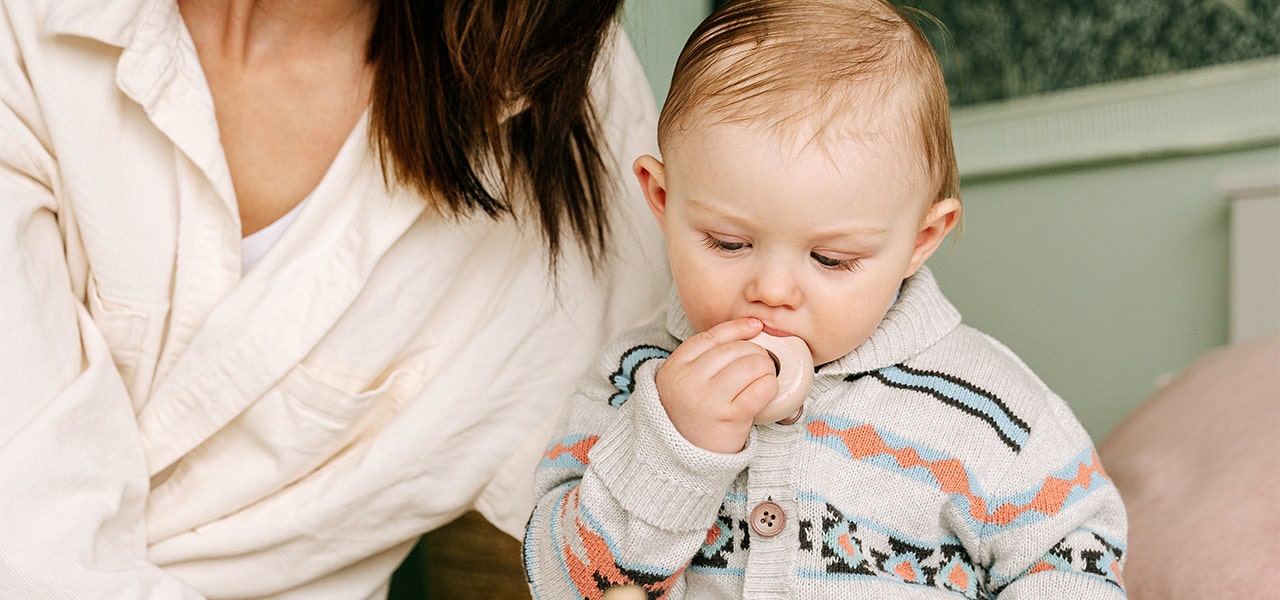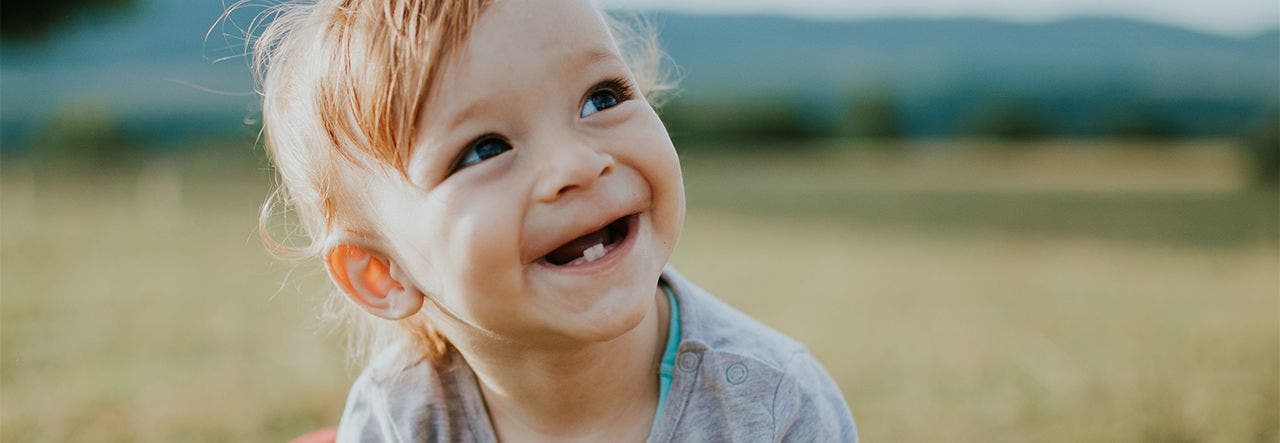There’s something just so cute about a round cheeked baby with one or two teeth grinning up at you! It’s almost enough to make you forget the torture it took to get there.
Teething is a brutal stage at any age. Babies and toddlers bear the brunt of the experience, cutting 20 teeth within their first 30-ish months after birth – and all while developmentally having limited communication tools, self-soothing mechanisms and ability to even understand what is happening. All of that adds up to little ones in pain, unable to communicate their misery any other way than through tears and having no understanding of what they are experiencing.
Nothing is more disrupted during this mind-numbing agony than sleep. Theirs, yours, your neighbors’ and probably the man on the moon’s, too. In fact, it often seems like teething pain and discomfort is worse when the teether should be sleeping – meaning that now they’re miserable AND tired AND not able to sleep. So everyone around them is miserable AND tired AND not able to sleep.
Here’s what you need to know about infant and toddler teething and sleep, plus some tips for baby teething relief.
Why Does Teething Disrupt Sleep?


Last year one of my children began cutting a wisdom tooth. A young adult, she understood what was happening, was aware it was coming and could communicate easily (unlike babies and toddlers!). The pain was so intense even with medication that she was in tears, huddled on her bed unable to sleep, holding her cheek and begging me through mumbled sobs to make it stop. It was painful to watch but even worse for her to experience. Two weeks later, the tooth was in and the pain relented.
Given how helpful sleep is in healing, managing pain, improving tolerance, and supporting emotional regulation, brain development and bodily restoration (and so much more!), one would think that teething would lead to more sleep, not less. Sadly, that’s not the case.
Pain is more noticeable at night. Baby teething pain doesn’t increase at night, but pain is more noticeable at night. Cortisol levels drop at night so our nerves are more sensitive to pain signals. There isn’t as much to distract our minds so we’re more likely to feel pain because our attention isn’t directed elsewhere.
Signs That Your Little One Might Be Teething
While there aren’t always signs of baby teething, there are a few common ones. Just keep in mind that these signs don’t always show up or might only show up some of the time. These include:
- Drooling
- Red gums
- Swollen gums
- Flushed cheeks
- Runny nose
- Rashes
- Chewing on fingers
- Tugging on an ear
All of these can be signs of teething, but teething can also happen without any of them, and these very same symptoms are often present with many common childhood illnesses. Additionally, teething is intermittent, which can make it harder to keep track of. A tooth may be on the move for several days or weeks and then stop before starting again days, weeks or even months later.
How to Provide Teething Relief for Baby


Benzocaine is a common ingredient in many gum-pain-relief products, but it is dangerous for babies and toddlers. According to the FDA, teething gels/creams with benzocaine, a local anesthetic to numb gums and relieve the pain of teething, are not safe for infants and toddlers even if they are marketed as such. It can cause a serious condition called methemoglobinemia that reduces the amount of oxygen carried through the bloodstream. This disorder can be fatal.
But don’t fret – other baby teething relief is possible. Gentle gum massage; counter pressure (such as chewing on a safe teething toy – we love smooth wood rings); cold (not frozen) toys; skin to skin cuddles; and certain over the counter medications can soothe your little one’s sore gums. Just remember to always check with your child’s health care provider before giving your child any over the counter medications.
If you're breastfeeding, frequent feedings may lower pain levels. Human milk has a naturally occurring pain reliever that is completely safe! Breastfeeding can even help with sleep as it releases oxytocin and contains melatonin at night.
Teething isn’t forever. Once a gum is swollen and inflamed, it typically takes up to eight days for the tooth to erupt. There are exceptions to this and sometimes a child may cut several teeth at once or one right after the other. It’s a brutal process when they’re in it but it does have an end point and then there will be all the toothy grins to enjoy. Hang in there!
Here are more ways to keep your little one healthy and comfortable.
 BABY
BABY  KIDS
KIDS  ADULT
ADULT  LEARN
LEARN  STORES
STORES 
